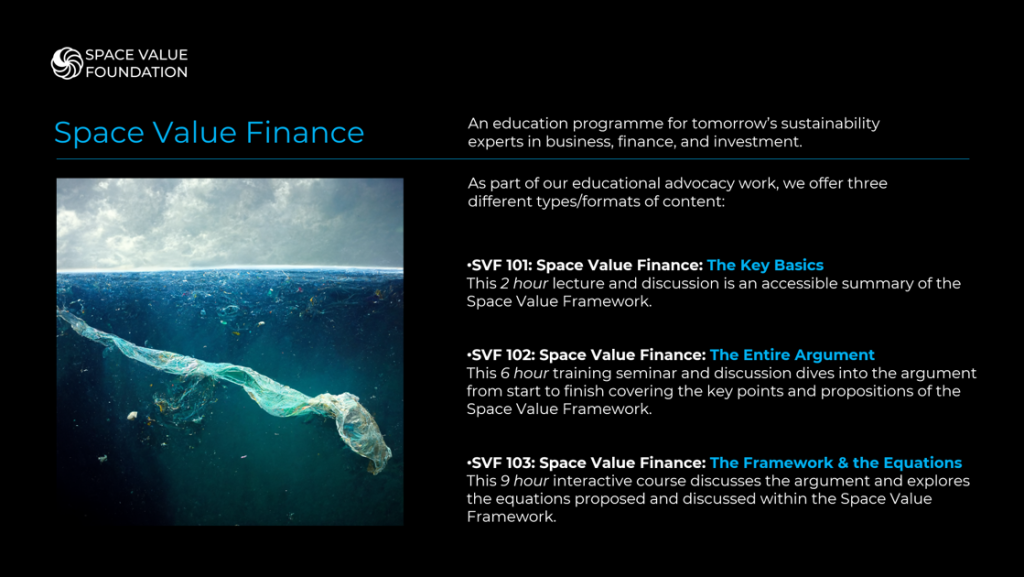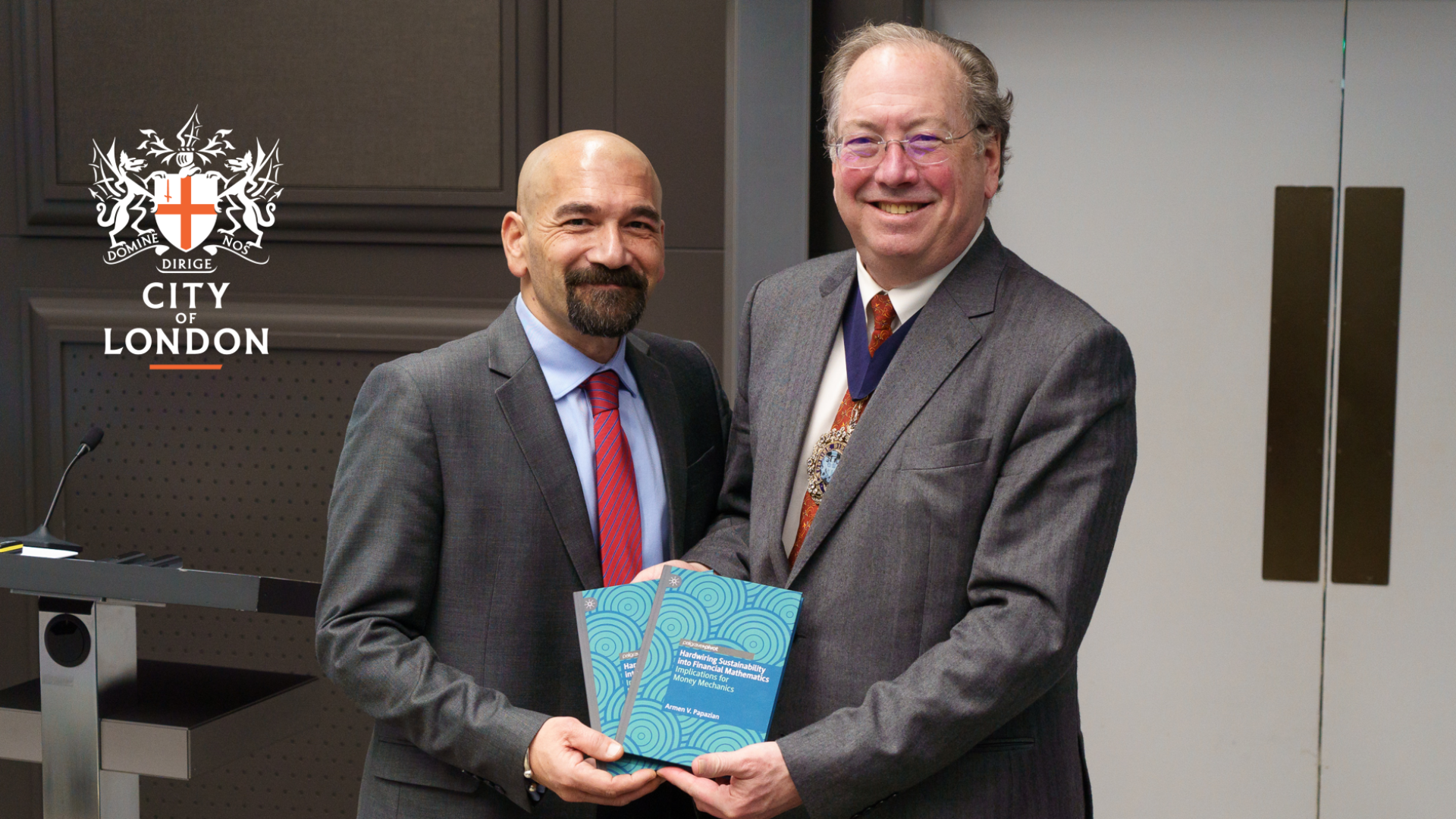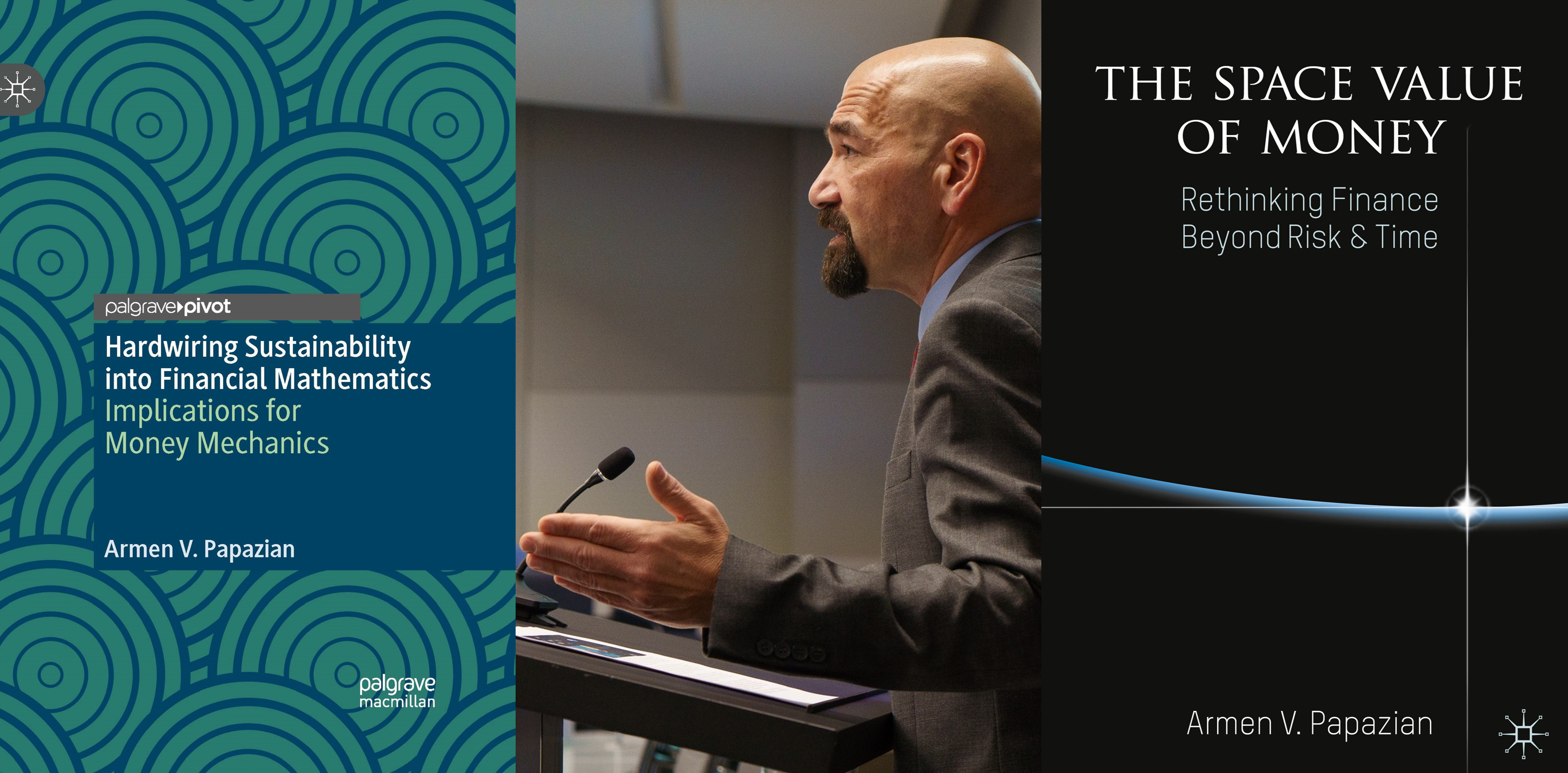Whether you would like to train and prepare your team for new reporting requirements or the measurement of impact. You have come to the right place. We empower you on a journey towards a sustainable value chain.
Space Value Foundation's High Level Educational objective
Our primary objective is to change the underlying value paradigm of investment decisions and monetary value, in public and private spheres, in projects and companies, in instruments and markets. Such that, space impact (across all layers) is factored into the financial economics of those decisions at the outset – rather than after the event when impact has already occurred. We aim to achieve such a transformation through a dynamic content offering online, workshops and seminars, and a proactive engagement with clients, partners, and other sustainability initiatives.
What We Offer
If you need to ensure your team is ready for the many reporting requirements regarding climate and sustainability, you are in the right place. If you would like to stretch your team’s vision and understanding of the many challenges and solutions of sustainable finance, you are in the right place.
With the direct involvement and leadership of Dr. Armen V. Papazian, the Space Value Foundation offers effective thought-provoking and mind-stretching educational and analytical content to you and your teams.
- Workshops, trainings, seminars
- Lectures and keynote speeches
- Courses
- In Person or online
Please contact us for further details on our educational offering by writing to us: info@spacevaluefoundation.com
You can also submit an educational service inquiry below:
If you are already clear on what you want and would like to book a service, you can start by submitting the form below:



